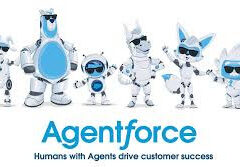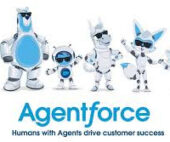The Evolution Beyond AI Agents: What Comes Next?
The Rapid Progression of AI Terminology
The landscape of artificial intelligence has undergone a remarkable transformation in just three years. What began with ChatGPT and generative AI as the dominant buzzwords quickly evolved into discussions about copilots, and most recently, agentic AI emerged as 2024‘s defining concept. This accelerated terminology cycle mirrors fashion industry trends more than traditional technology adoption curves.
Major players including Adobe, Qualtrics, Oracle, OpenAI, and Deloitte have recently launched agentic AI platforms, joining earlier entrants like Microsoft, AWS, and Salesforce. This rapid market saturation suggests the industry may already be approaching the next conceptual shift before many organizations have fully implemented their current AI strategies.
Examining the Staying Power of Agentic AI
Industry analysts present diverging views on the longevity of the agentic AI concept. Brandon Purcell, a Forrester Research analyst, acknowledges the pattern of fleeting AI trends while recognizing agentic AI’s potential for greater staying power. He cites three key factors that may extend its relevance:
- Automation capabilities that drive operational efficiencies
- Measurable productivity gains across business functions
- Revenue growth potential for early adopters who implement effectively
Klaasjan Tukker, Adobe’s Senior Director of Product Marketing, draws parallels to mature technologies that have become invisible infrastructure. He predicts agentic AI will follow a similar trajectory, becoming so seamlessly integrated that users will interact with it as unconsciously as they use navigation apps or operate modern vehicles.
The Automotive Sector as an AI Innovation Catalyst
The automotive industry provides compelling examples of advanced AI applications that transcend current “agentic” capabilities. Modern autonomous vehicles demonstrate sophisticated AI behaviors including:
- Continuous environmental monitoring
- Complex decision-making processes
- Real-time plan adaptation
- Multi-system verification protocols
These implementations suggest that what the tech industry currently labels as “agentic” may represent only an intermediate step toward more autonomous, context-aware systems.
The Definitional Challenges of Agentic AI
The technology sector faces significant challenges in establishing common definitions for emerging AI concepts. Adobe’s framework describes agents as systems possessing three core attributes:
- Reasoning capacity – Ability to process information and draw conclusions
- Interactivity – Capacity for bidirectional communication
- Autonomy – Capability to operate independently
However, as Scott Brinker of HubSpot notes, the term “agentic” risks becoming overused and diluted as vendors apply it inconsistently across various applications and functionalities.
Interoperability as the Critical Success Factor
For agentic AI systems to deliver lasting value, industry observers emphasize the necessity of cross-platform compatibility. Phil Regnault of PwC highlights the reality that enterprise environments typically combine solutions from multiple vendors, creating integration challenges for AI implementations.
Three critical layers require standardization:
- Data layer – Common protocols for information exchange
- Intelligence layer – Shared frameworks for AI processing
- Application layer – Unified interfaces for system interaction
Without such standards, organizations risk creating new AI silos that mirror the limitations of legacy systems.
The Future Beyond Agentic AI
While agentic AI continues its maturation process, the technology sector’s relentless innovation cycle suggests the next conceptual breakthrough may emerge sooner than expected. Historical naming patterns for AI advancements indicate several possibilities:
- Autonomous Systems emphasizing self-directed operation
- Cognitive Platforms highlighting advanced reasoning capabilities
- Adaptive Intelligence focusing on contextual learning
As these technologies evolve, they may shed specialized branding in favor of more utilitarian terminology, much as “software bots” became normalized after their initial hype cycle.
The automotive parallel suggests that truly transformative AI implementations may become so seamlessly integrated that their underlying technology becomes invisible to end users—the ultimate measure of technological maturity. Until that point, the industry will likely continue its rapid cycle of innovation and rebranding, searching for the next paradigm that captures the imagination as powerfully as “agentic AI” has in 2024.













